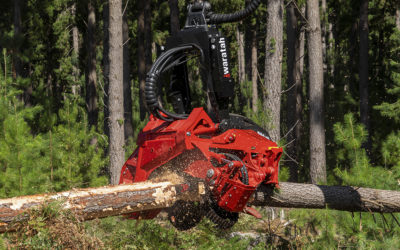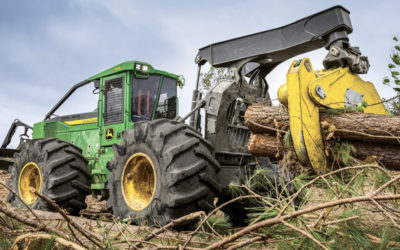The Multiple Benefits Of Managed Forests
(Note: This essay, written by Dr. William Stewart, a University of California-Berkeley forestry specialist and co-director of the Center For Forestry at UC-Berkeley’s Blodgett Forest, was excerpted from the summer 2010 edition of California Forests and published recently in the Sacramento Bee. Although he targets California, his suggestions are applicable to most of the forested West.)
Forest management can lead to cleaner air, safer communities and lower firefighting costs, yet its greatest value may lie in addressing climate change and what it keeps hidden underground.
Managing forests helps reduce greenhouse gas emissions. It lowers the threat and severity of wildfire, a significant source of avoidable emissions. It also keeps fossil fuels underground.
Research has shown that active forest management can provide significantly greater carbon benefits than management strategies that set forests aside in reserves. While young reserved and managed forests sequester, or remove from the atmosphere and store, roughly the same amount of carbon in standing trees, actively managed forests can provide the additional benefit of offsetting fossil-fuel use by producing low-carbon energy from forest and sawmill residues.
Managing forests to reduce fuel loads provides immediate dividends. Fewer fuels mean less-intense wildfire, greater firefighter safety, lesser environmental consequence and fewer greenhouse gas emissions. There’s great carbon benefit right there—emissions avoided and standing carbon protected—by capturing the thinnings that might otherwise have gone up in smoke and using them to generate energy. When forests are thinned, the harvested biomass can be chipped and used to produce energy. Biomass energy takes carbon that is above ground (chips) and keeps it above ground by burning it in power plants to produce electricity. Biomass energy is carbon-neutral because no more carbon is released, producing energy than would be if the vegetation were to simply decay. Conversely, burning fossil fuels takes carbon that was stored safely underground and releases it to the atmosphere. Burning fossil fuels increases carbon emissions every time.
Forest management can reduce emissions from wildfire and burning fossil fuels because every megawatt generated from biomass can replace a megawatt generated from emission-spewing fossil fuels. Substituting biomass energy, a byproduct of sustainable forest management, for coal-fired energy could reduce California’s carbon footprint.
But California is under-investing in forest management. California taxpayers spend more than $1 billion annually to fight wildfire and almost nothing to reduce fuels at the source. More than 400 trees per acre now stand in many Sierra forests where about 70 stood before the Gold Rush. Tree mortality is extremely high and dangerous fuel accumulations clutter millions of acres. Continuing down a path of increasing wildfire severity, firefighting costs and emissions have serious long-term consequences.
Forest management offers wildfire relief and a clean-energy source close to millions of Californians. Yet California’s forestry infrastructure is in decline and forest management has been brought to a virtual halt. Harvest on public forestlands is down 90% over the last 25 years, the same time frame during which firefighting costs have skyrocketed.
The most effective way to sequester more carbon in forests is to restore resilient forests to California’s landscape. Californians would benefit from forest management policies that reward performance over time and create investment opportunities that put people back to work, leverage renewable energy and reduce severe wildfire.
Unfortunately, forestry’s climate benefits aren’t worth much in terms of cold hard cash. Stewardship contracts that leverage lumber and biomass energy production to reduce fuels across greater areas could be extended. Carbon policy should address that. Forestry regulations that create longer-term investment windows are needed to justify the capital expenses required to achieve sustainable climate benefits. Tax policy should level the playing field for biomass energy, which receives a fraction of the incentives that wind, solar and geothermal garner.
We must revitalize our energy and forestry infrastructure with actions that encourage innovation, create family wage jobs and conserve California’s forest resources. We can’t export our emissions and wildfire problems, but we can invest in a locally grown, clean-energy producing solution.
Latest News
New From Waratah: 624HX Harvester Head
New From Waratah: 624HX Harvester Head Waratah Forestry Equipment has launched an all-new HX line with its 624HX harvester heads. Building on generations of Waratah HTH attachments, the new...
John Deere Rolls Out TimberMatic Maps Auto Pickup Feature For Skidders
John Deere Rolls Out TimberMatic Maps Auto Pickup Feature For SkiddersIndustry-exclusive Auto Pickup within John Deere TimberMatic Maps makes it easier for skidder operators to collect production...
WANT MORE CONTENT?
Spanning seven decades since its inception in 1952, Timber Harvesting highlights innovative and successful logging operations across the U.S. and around the world. Timber Harvesting also emphasizes new technology and provides the best marketing vehicle for the industry’s suppliers to reach the largest number of loggers in North America and beyond.
Call Us: 800.669.5613


